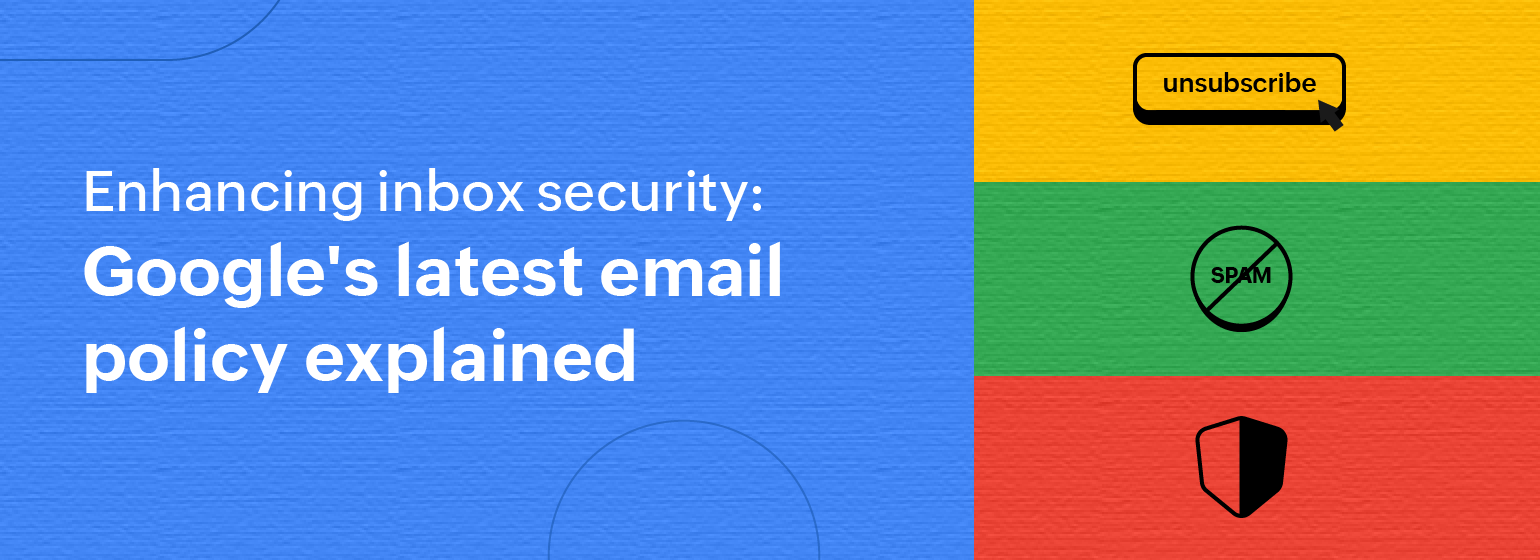Google's latest email policy and safer, more secure inboxes

In 2022, a staggering 333 billion emails were sent daily. According to data released by Google, unauthenticated messages received by Gmail users plummeted by 75%. This significant reduction prompted Google to introduce new policies aimed at creating a safer and less cluttered inbox experience.
From February 2024, users are expected to see temporary errors for unauthenticated emails and by April, unauthenticated emails that do not pass Domain-based Message Authentication , Reporting, and Conformance (DMARC) will be rejected. The temporary errors are to help senders identify email traffic that doesn’t meet Google’s guidelines, thereby helping senders to rectify issues.
Based on Google's new policy, bulk senders who exceed 5,000 emails per day must now adhere to stricter rules.
- Authentication requirement
Senders are required to authenticate their emails, enhancing confidence in the email's source and closing potential loopholes exploited by attackers. - Simplified unsubscription process
Google mandates that opting out of receiving emails should be simple and quick. Bulk senders have to provide Gmail recipients with a one-click option to unsubscribe from commercial emails, with requests processed within two days. This empowers users by giving them more control over their inbox. - Spam prevention measures
As an additional measure to combat spam, a clear spam rate threshold will be enforced. Senders have to be below this threshold to ensure Gmail recipients are not inundated with unwanted emails.
These measures aim to enhance email security, improve the user experience, and reduce inbox clutter for Gmail users. This is where the concept of email validation comes into play.
What is email validation?
Email validation is the process of verifying the accuracy and legitimacy of an email address to ensure that it is deliverable and conforms to standard formatting rules. Email validation typically involves checking the syntax, domain, and mailbox of an email address to determine its validity.
The key components of email validation include syntax check that verifies that the email address follows the standard format specified by the Internet Engineering Task Force (IETF) in RFC 5322 and RFC 6531—the domain verification step that validates the domain part of the email address to ensure that it exists and is configured to accept email. The mailbox check attempts to communicate with the mail server associated with the email address to determine if the mailbox exists and is active.
Some email validation services also include a feature to detect disposable email addresses (DEAs) or temporary email accounts created for short-term use. Also, there are some email validation tools that offer typo-correction capabilities to identify and correct common misspellings or typos in email addresses.
By performing email validation, businesses and email marketers can ensure that their email lists are clean, accurate, and up to date, leading to improved deliverability rates, higher engagement, and better overall email marketing performance. Additionally, email validation helps prevent issues such as bounce backs, spam complaints, and abuse reports, which can negatively impact sender reputation and deliverability in the long run.
Sender Policy Framework (SPF), DomainKeys Identified Mail (DKIM), and DMARC are three key email authentication protocols that play crucial roles in improving email security, reducing spam, and combating phishing attacks. SPF validates the sender's identity by verifying that the sending mail server is authorized to send emails on behalf of a specific domain. DMARC builds upon SPF and DKIM by providing additional policies for email validation, reporting, and enforcement, allowing domain owners to specify how emails that fail authentication should be handled. DKIM adds a digital signature to outgoing emails, providing a mechanism for verifying message integrity and authenticity.
Together, these authentication protocols work in concert to prevent email spoofing, phishing attacks, and domain impersonation, thereby bolstering trust and confidence in email communications.
As we have seen, Google's latest email policy represents a significant step forward in the ongoing battle against email-based threats. By implementing stricter authentication measures such as SPF, DMARC, and DKIM, Google is enhancing the security of inboxes across its platforms, ultimately creating safer digital environments for users worldwide. These policies not only protect against phishing attacks and spoofed emails but also help preserve the integrity of online communications.
As users become increasingly reliant on email for personal and professional correspondence, the importance of robust email security measures cannot be overstated. Google's commitment to fostering safer, more secure inboxes sets a precedent for other email service providers and reinforces the collective effort to combat cyberthreats effectively. By staying informed about these policies and leveraging additional security features, users can play an active role in safeguarding their online identities and communications.